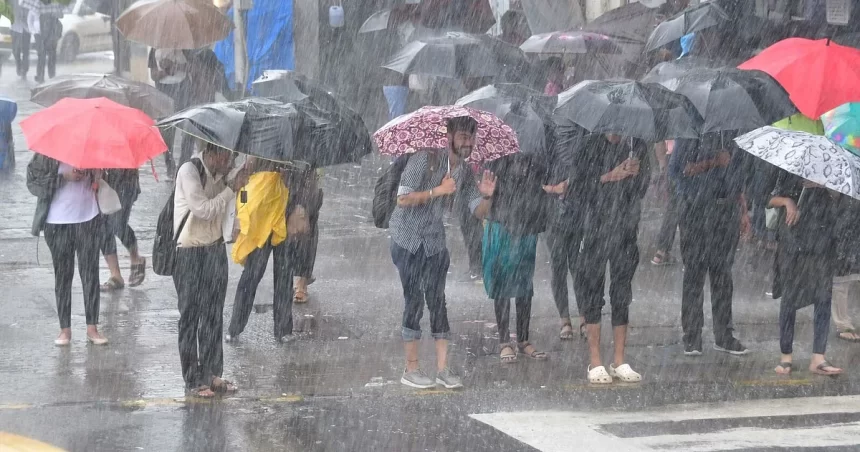The India Meteorological Department (IMD) has issued an orange alert for Wednesday, indicating the weather in Delhi could potentially worsen, causing disruptions and potential threats to life and property, even as most places in the Capital recorded moderate rainfall.
Mayur Vihar recorded a heavy rain spell of 110.5mm between 5:30am and 8:30am, leading to waterlogging. Rain both locally and in Uttarakhand and Himachal was expected to lead to a rise in Yamuna waters level. The river was flowing at 205.10m at 10am amid the orange alert, a severe level warning to ensure people are equipped to handle emergencies in preparation for significant changes in weather. A yellow alert, which means people should stay updated about the severe weather, is in place for moderate showers on Thursday.
The Central Water Commission said the river was expected to rise to 205.16m by 1pm on Wednesday. The danger level is 205.33m
“Major traffic disruption might occur on roads. There might be water accumulation in low-lying areas and on roads,” said the IMD website.
Safdarjung meteorological station, which is representative of Delhi’s weather, recorded 368.6mm of rainfall over the 24 hours that ended at 8:30am on Wednesday. This is in excess of the monthly long-period average of 209.7mm and the second-highest July rainfall in the three years. Delhi has crossed 300mm thrice in the last 15 years. In 2021, 507.1mm was recorded in July. In 2013, Delhi received 340.5mm of rainfall throughout the month.
The Capital received its heaviest deluge for a July day in 21 years on the 8th of the month when 126.1mm of rain was recorded between 8.30am and 5.30pm, triggering chaos on the streets and highlighting a lack of preparedness to tackle the monsoon.
Low-lying neighbourhoods in the Capital were flooded and prompted evacuations on July 12 as surging water levels in the Yamuna breached a 45-year-old landmark to touch record levels. The Yamuna swelled to 208.08m breaking the previous record of 207.49m on September 6, 1978.
ITO and Mathura Road were submerged on July 14 as the army and the navy were deployed to bring the flooding under control. The situation worsened on the stretch after a drain regulator broke down even as five of the 32 gates at the barrage along the old ITO bridge were also jammed. The swollen Yamuna waters entered one of the busiest traffic junctions in Delhi.
The IMD classifies rainfall between trace and 2.4mm as very light, 2.5mm and 15.5mm as light, 15.6mm and 64.4mm as moderate, 64.5mm and 115.5mm as heavy, and 115.6mm or higher as very heavy.


Leave a Reply